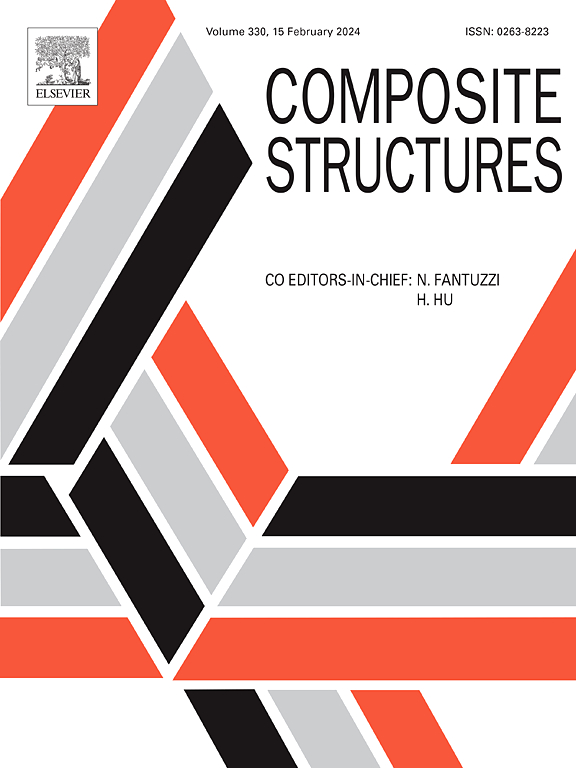A novel FFT-based micromechanical modeling approach for the fracture behavior of a composite core in metal sandwich plates using a cohesive zone model
IF 6.3
2区 材料科学
Q1 MATERIALS SCIENCE, COMPOSITES
引用次数: 0
Abstract
HybrixTM sandwich plates (Lamera AB, Gothenburg, Sweden) with metal face sheets could replace standard metal plates in many lightweight applications. Their composite core, which is crucial for the structural performance and the fracture behavior of the whole plate, consists of polymer fibers and binder, and a large amount of porosity. In this work, a novel micromechanical modeling approach for the fracture behavior of the composite core is presented, which could allow for a faster and improved design process for novel configurations of the plates. The modeling approach involves a novel method for the generation of virtual models for the complex microstructure of the core and our recently developed theoretical framework of an FFT-based computational homogenization scheme for cohesive zones. Furthermore, the parameters of the elastic–plastic material model including a non-local, ductile damage model were identified using microindentation experiments and mode I tests (Double Cantilever Beam). The novel modeling approach, along with the FFT-based homogenization scheme for cohesive zones, was also experimentally validated using mode III tests (Split Cantilever Beam) and a corresponding Finite Element simulation.
基于fft的金属夹层复合材料岩心断裂微观力学模型研究
带有金属面板的HybrixTM夹层板(Lamera AB,哥德堡,瑞典)可以在许多轻量级应用中取代标准金属板。它们的复合芯由聚合物纤维、粘结剂和大量孔隙组成,对整个板的结构性能和断裂行为至关重要。在这项工作中,提出了一种新的复合材料芯断裂行为的微力学建模方法,这可以允许更快和改进的设计过程,为新的板配置。建模方法包括一种为核心复杂微观结构生成虚拟模型的新方法,以及我们最近开发的基于fft的内聚区计算均匀化方案的理论框架。此外,通过微压痕试验和I型试验(双悬臂梁)确定了非局部延性损伤模型的弹塑性模型参数。这种新颖的建模方法,以及基于fft的内聚区均匀化方案,也通过III型试验(拆分悬臂梁)和相应的有限元模拟进行了实验验证。
本文章由计算机程序翻译,如有差异,请以英文原文为准。
求助全文
约1分钟内获得全文
求助全文
来源期刊

Composite Structures
工程技术-材料科学:复合
CiteScore
12.00
自引率
12.70%
发文量
1246
审稿时长
78 days
期刊介绍:
The past few decades have seen outstanding advances in the use of composite materials in structural applications. There can be little doubt that, within engineering circles, composites have revolutionised traditional design concepts and made possible an unparalleled range of new and exciting possibilities as viable materials for construction. Composite Structures, an International Journal, disseminates knowledge between users, manufacturers, designers and researchers involved in structures or structural components manufactured using composite materials.
The journal publishes papers which contribute to knowledge in the use of composite materials in engineering structures. Papers deal with design, research and development studies, experimental investigations, theoretical analysis and fabrication techniques relevant to the application of composites in load-bearing components for assemblies, ranging from individual components such as plates and shells to complete composite structures.
 求助内容:
求助内容: 应助结果提醒方式:
应助结果提醒方式:


